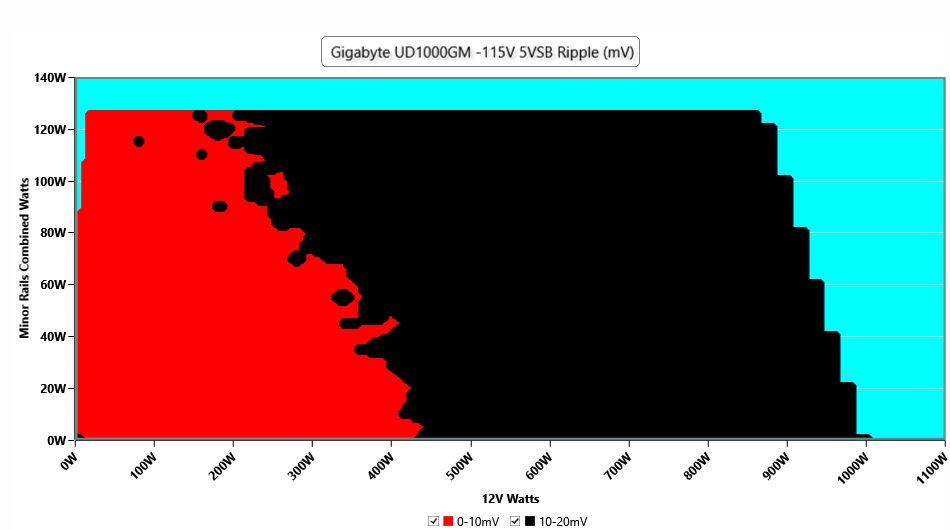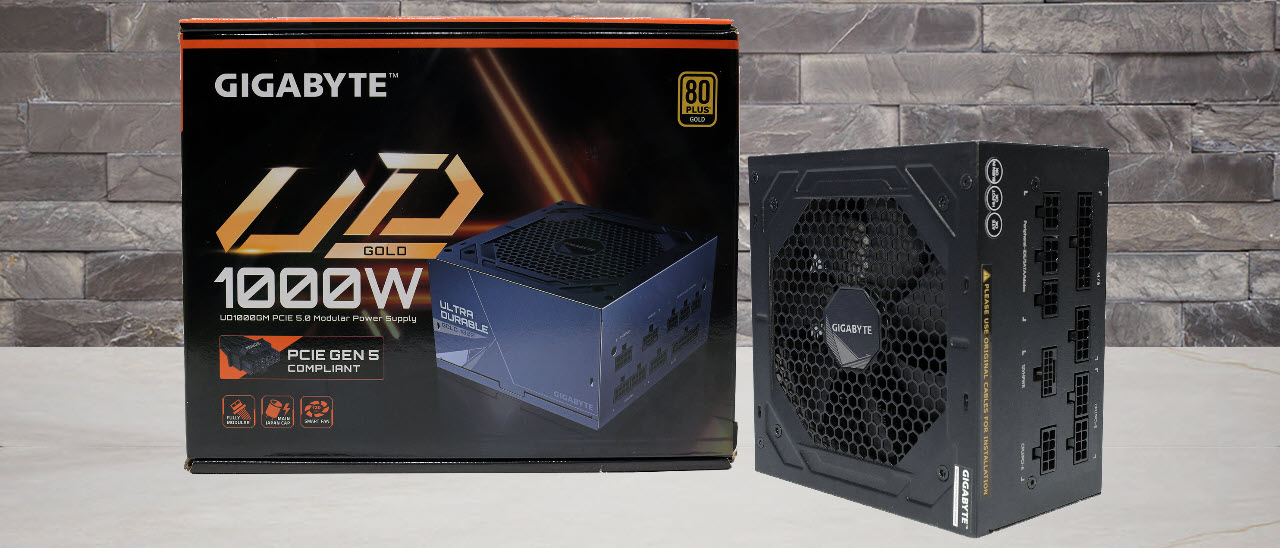Why you can trust Tom's Hardware
Protection Features
Check out our PSUs 101 article to learn more about PSU protection features.
| OCP (Cold @ 27°C) | 12V: 105.2A (126.29%), 11.973V 5V: 35A (140%), 5.177V 3.3V: 30.5A (122%), 3.340V 5VSB: 4.6A (153.33%), 4.959V |
| OCP (Hot @ 39°C) | 12V: 105.2A (126.29%), 11.981V 5V: 34.1A (136.4%), 5.163V 3.3V: 30.3A (121.2%), 3.340V 5VSB: 4.6A (153.33%), 4.958V |
| OPP (Cold @ 28°C) | 1239.04W (123.9%) |
| OPP (Hot @ 40°C) | 1236.02W (123.6%) |
| OTP | ✓ (151°C @ 12V Heat Sink) |
| SCP | 12V to Earth: ✓ 5V to Earth: ✓ 3.3V to Earth: ✓ 5VSB to Earth: ✓ -12V to Earth: ✓ |
| PWR_OK | Accurate but lower than 16ms |
| NLO | ✓ |
| SIP | Surge: MOV Inrush: NTC Thermistor |
The OCP triggering points are correctly set at 12V and 3.3V, which goes for OPP, too. At 5V, there is no need for 34-35A triggering points. Finally, it is weird that there is no relay for the NTC thermistor. There was no room to install one. Still, it is not acceptable for a PSU of this price and category to not have a bypass relay, which allows the NTC thermistor to cool down fast.
DC Power Sequencing
According to Intel’s most recent Power Supply Design Guide (revision 1.4), the +12V and 5V outputs must be equal to or greater than the 3.3V rail at all times. Unfortunately, Intel doesn't mention why it is so important to always keep the 3.3V rail's voltage lower than the levels of the other two outputs.



No problems here since the 3.3V rail is always lower than the other two.
Cross Load Tests
To generate the following charts, we set our loaders to auto mode through custom-made software before trying more than 25,000 possible load combinations with the +12V, 5V, and 3.3V rails. The deviations in each of the charts below are calculated by taking the nominal values of the rails (12V, 5V, and 3.3V) as point zero. The ambient temperature during testing was between 30 to 32 degrees Celsius (86 to 89.6 degrees Fahrenheit).
Load Regulation Charts




Efficiency Graph
Ripple Graphs
The lower the power supply's ripple, the more stable the system will be and less stress will also be applied to its components.




Infrared Images
We apply a half-load for 10 minutes with the PSU's top cover and cooling fan removed before taking photos with a modified Fluke Ti480 PRO camera able to deliver an IR resolution of 640x480 (307,200 pixels).
Get Tom's Hardware's best news and in-depth reviews, straight to your inbox.




Despite the harsh conditions, the temperatures in most parts are low. The hottest part is the NTC thermistor because it lacks a bypass relay. MEIC and Gigabyte should address this shortcoming ASAP because the inrush current will go through the roof in a hot-start with the bulk cap empty.
MORE: Best Power Supplies
MORE: How We Test Power Supplies
MORE: All Power Supply Content
Current page: Protection Features, DC Power Sequencing, Cross-Load Tests and Infrared Images
Prev Page Load Regulation, Hold-Up Time, Inrush & Leakage Current, Efficiency and Noise Next Page Transient Response Tests, Timing Tests, Ripple Measurements and EMC Pre-Compliance Testing
Aris Mpitziopoulos is a contributing editor at Tom's Hardware, covering PSUs.
-
Udyr So this is a 4 star product with 1, 2, 3, 4... 12 cons?Reply
The cons are somewhat consistent with the review on TPU, but over there it was not a recommended product.
Maybe there's something more my ignorant self is not seeing here. -
DRagor ReplyUdyr said:So this is a 4 star product with 1, 2, 3, 4... 12 cons?The Gigabyte UD1000GM PG5 is the first PSU available with a 12+4 pin PCIe connector, so practically, it doesn't have any competitors yet.
How it was? In the land of blind one eyed is a king? -
WrongRookie No thanks. I'd rather wait for Seasonic do one than get another one that could end up explodingReply -
Udyr Reply
I understand the reference, but in this case, a unit with these many downsides doesn't justify a recommendation, unless there's something else besides being the only one available (for now).DRagor said:How it was? In the land of blind one eyed is a king? -
thisisaname Reply
Some of the positives are not that great either.Udyr said:So this is a 4 star product with 1, 2, 3, 4... 12 cons?
The cons are somewhat consistent with the review on TPU, but over there it was not a recommended product.
Maybe there's something more my ignorant self is not seeing here.
+Full power at 47 degrees Celsius
+Most protection features are properly set -
watzupken Once beaten, twice shy. After the shady practice and persistent denial of critical flaws with their product by Gigabyte, even if this is a 5 stars PSU, I will not bother to consider it. There are much better options out there. I rather pay more than to deal with shady companies. In my opinion, it is not the product that we need to be mindful because every company will at some point produce bad product. It is how they take steps to resolve the issue and maintain that goodwill. Gigabyte basically burned that goodwill in the PSU fiasco. So no more Gigabyte products for me since the company can’t be bothered.Reply

